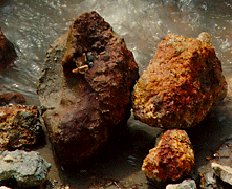Sulfolobus solfataricus
Classification
Domain; Phylum; Class; Order; family [Others may be used. Use NCBI link to find]
Species
|
NCBI: Taxonomy |
Sulfolobus solfataricus
Description and Significance
Describe the appearance, habitat, etc. of the organism, and why you think it is important.
Genome Structure
Describe the size and content of the genome. How many chromosomes? Circular or linear? Other interesting features? What is known about its sequence?
Cell Structure, Metabolism and Life Cycle
Interesting features of cell structure; how it gains energy; what important molecules it produces.
Ecology and Pathogenesis
Sulfolobus solfataricus is a thermoacidophile, and was first characterized in sulfur-rich volcanic springs in Yellowstone National Park. Strains of S. solfataricus have also been found in hot mud pools in the Solfatara crater north of Naples, Italy. It has also been discovered in El Salvador and the Dominica. While the optimum temperature for growth is ≈75oC, S. solfataricus can live in a range of 55-90oC. It can live in a pH range of 0.9-5.8, with its optimum being 2-3. However, S. solfataricus maintains its cytoplasmic pH at 6.5. It has also been shown that S. solfataricus requires an aerobic environment, in which it exists as a free-living sulfur chemolithotroph.
Strains of S. solfataricus are known to harbor plasmids that encourage bacteria-like conjugation between cells. However, the genes behind these mechanisms are dissimilar between S. solfataricus and bacteria.
S. solfataricus can be infected by morphologically unusual viruses, such as SSV1 (Sulfolobus spindle-shaped virus). The virions formed by SSV1 often cluster together, forming rosette-like shapes. These viruses have been found in Yellowstone National Park, Iceland, and Japan.
References
Author
Page authored by Alvin Makohon-Moore and Antoni Malachowski, students of Prof. Jay Lennon at Michigan State University.


